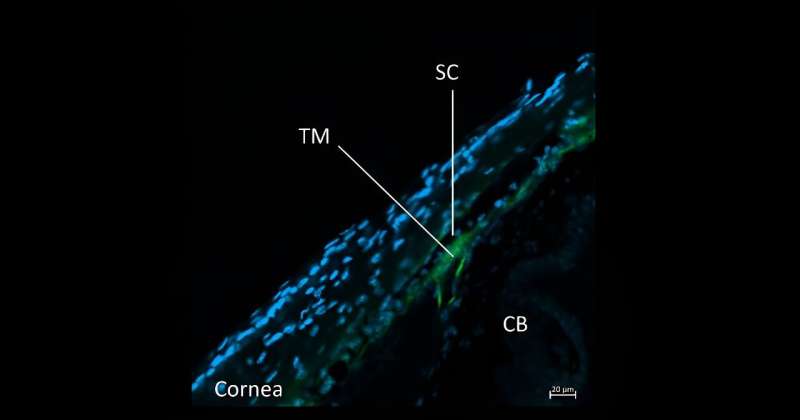This article has been reviewed according to Science X's editorial process and policies. Editors have highlighted the following attributes while ensuring the content's credibility:
fact-checked
trusted source
proofread
Key mechanism of intraocular pressure regulation suggests novel treatment approaches for glaucoma

Glaucoma is one of the leading causes of visual impairment and blindness. According to statistics from the Hospital Authority, in Hong Kong, three out of every 100 individuals aged over 40 suffer from glaucoma.
In its early stages, obvious symptoms may not be present and those less obvious are often overlooked. By the time patients notice changes in their vision, the condition is usually severe.
Dr. Samantha Shan, Research Assistant Professor of the School of Optometry of The Hong Kong Polytechnic University (PolyU) and her team have discovered the mechanism of intraocular pressure (IOP) regulation, paving the way for novel treatment approaches for glaucoma, with the aspiration of preventing vision loss from this disease.
In glaucoma patients, the fluid within the eye (known as "aqueous humor") continuously flows, resulting in higher IOP for which long-term medication is required. However, current drugs have limitations in that they can only slow disease progression rather than halt it completely. Drugs may also have suboptimal tolerability and their efficacy diminishes over time.
The microRNA(miR)-17-92 cluster is known to play an important role in cell signaling, but its specific functions in the eye are not well understood.
In this respect, Dr. Shan and her team's research focus lies in gaining insights into the mechanisms of miR-17-92 cluster members and their effects on IOP.
The team has identified thrombospondin-1 (TSP-1) as a protein that reduces the outflow of aqueous humor and increases IOP. Concurrently, the team mimicked three members of the miR-17-92 cluster in human trabecular meshwork (hTM) cells which are responsible for draining aqueous humor within the eye.
It showed that the expression of TSP-1 was repressed, resulting in an approximately 73% increase in the outflow of aqueous humor in mice.
Dr. Shan's team will further explore the effects of miR-17-92 members in IOP regulation.
Looking forward, the team will investigate the direct interaction between specific miRNAs and TSP-1 by blocking the potential target sites of the three miRNAs in TSP-1 in hTM cells.
They will also examine the functional consequences of modulating this pathway on aqueous humor outflow and IOP regulation in vivo. This would be achieved by utilizing intravitreal injections of a TSP-1 target-specific blocker or miRNA mimics in mouse eyes.
Dr. Shan said, "Genomic and proteomic approaches play a crucial role in understanding the genetic and molecular mechanisms underlying diseases such as glaucoma. In the context of glaucoma treatment, these approaches can help identify potential biomarkers, therapeutic targets and personalized treatment options, with far-reaching implications."





















